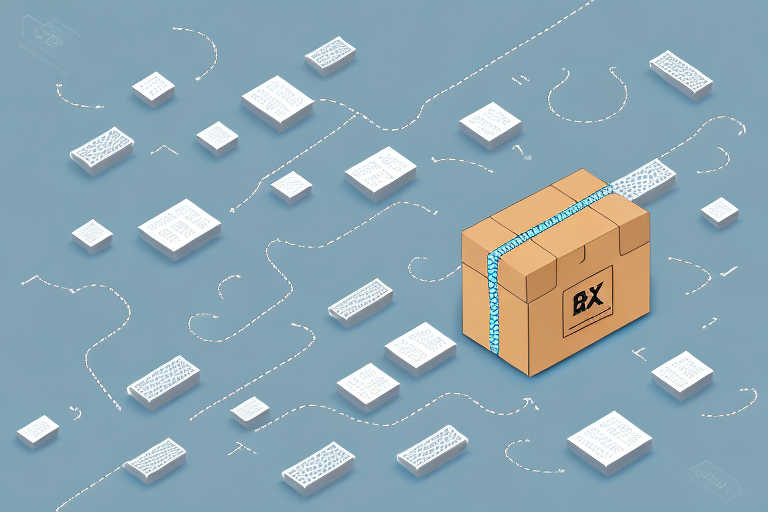Understanding Bonded Goods in the Supply Chain
The logistics industry is a complex and ever-changing sector that requires businesses to stay up-to-date with the latest trends and practices to succeed. One area of logistics that has gained greater attention in recent years is the concept of bonded goods within the supply chain. In this article, we will explore what bonded goods are, the different types of bonded goods, the benefits and challenges of bonded warehousing, and best practices for managing bonded goods in the supply chain.
What are Bonded Goods?
Bonded goods are products that are kept in a bonded warehouse for a certain period without being subjected to import duties and taxes. These warehouses are either owned by the government or by private companies licensed by the government to operate bonded warehouses. The purpose of bonded warehouses is to provide a secure and regulated environment for storing goods that have yet to be cleared by customs. Additionally, bonded warehouses serve as holding facilities for goods that are waiting to be sold or shipped to a foreign country.
Bonded goods can also be used as collateral for loans. Since these goods are stored in a secure and regulated environment, they are considered low-risk assets that can secure loans. This is particularly useful for businesses needing access to capital without selling their inventory or tying up their cash flow. By using bonded goods as collateral, businesses can access necessary funds while retaining ownership of their inventory.
Types of Bonded Goods
There are several types of bonded goods stored in bonded warehouses, including:
- Raw materials
- Finished products
- Equipment and machinery
- Goods subject to specific regulations, such as hazardous materials, wine and spirits, and tobacco products
Additionally, bonded warehouses can store high-value items, such as jewelry, artwork, and antiques. These items require extra security measures, including surveillance cameras, alarms, and restricted access to ensure their safety. Bonded warehouses specializing in high-value items often feature climate-controlled storage units to protect delicate items from temperature and humidity fluctuations.
Bonded warehouses may also offer value-added services like repackaging, labeling, and assembly, which is particularly beneficial for companies importing goods in bulk and needing to repackage them for distribution to different markets. Quality control inspections are also provided to ensure goods meet the required standards before shipping.
Benefits of Bonded Warehousing
One of the primary benefits of bonded warehousing is the ability to store and manage goods without paying import duties and taxes upfront, resulting in significant cost savings. Bonded warehouses provide a secure and regulated environment, reducing the risk of theft and damage. They also allow businesses to hold onto their goods until they are sold or ready to be exported to other countries.
Additionally, bonded warehousing can help streamline supply chain operations by reducing the time and costs associated with transporting goods to and from customs. This improves supply chain efficiency, enabling businesses to better meet customer demands. Bonded warehousing also offers greater flexibility in inventory management, allowing businesses to adjust stock levels based on market demand and other factors.
According to the 2023 Logistics Report, the adoption of bonded warehousing solutions has increased by 15%, highlighting its growing importance in global trade.
How Bonded Goods are Stored and Managed in the Supply Chain
When stored in a bonded warehouse, goods are held under strict regulations and protocols. All items are cataloged and tracked to ensure they are stored in the correct locations and are frequently inspected to maintain quality. When ready for shipment, goods are released from the warehouse and transported to their destination via a logistics provider.
Bonded warehouses are particularly useful for goods subject to high import duties or taxes. By storing these goods in a bonded warehouse, importers can defer paying these fees until the goods are released for sale or export, reducing the financial burden and improving cash flow.
Additionally, bonded warehouses often offer value-added services such as labeling, repackaging, and assembly, which help streamline the supply chain and reduce costs for both importers and exporters.
Customs Clearance for Bonded Goods
Customs clearance is a crucial step for bonded goods, involving the verification of products for accuracy and compliance with customs regulations. The process typically includes reviewing product descriptions, verifying value and origin, and checking licensing or certification requirements. Once cleared, goods can be released from the bonded warehouse and shipped to their designated destination.
It's important to note that the customs clearance process can vary depending on the type of bonded goods being imported or exported. Certain products may require additional inspections or documentation to comply with health and safety regulations. The process may also take longer for goods coming from countries with stricter customs regulations. Working with a reputable customs broker, such as those found through ShipScience, ensures a smooth and efficient customs clearance process for your bonded goods.
Tax Benefits of Bonded Warehousing
The primary tax benefit of bonded warehousing is the ability to defer taxes and duties until goods are released from the bonded warehouse. This provides significant tax relief for businesses that need to store their goods for extended periods, as taxes are only paid when the goods are sold or exported.
Additionally, bonded warehousing allows businesses to import goods without paying customs duties and taxes upfront, improving cash flow and reducing the financial burden of regular imports. This is particularly beneficial for businesses with frequent importing needs, enhancing their financial flexibility.
Bonded warehouses also offer added security for high-value goods, reducing the risk of theft or damage through highly secure, monitored facilities. This is especially important for businesses handling sensitive or valuable products such as electronics or luxury goods.
Challenges in Managing Bonded Goods in the Supply Chain
Managing bonded goods in the supply chain can be complex, requiring meticulous attention to detail and strict adherence to regulations. Key challenges include:
- Ensuring proper storage and tracking to prevent theft, damage, or loss
- Navigating the complexities of customs clearance across different countries
- Ensuring accurate labeling and identification to prevent unintended release of goods
- Facilitating effective communication and collaboration among customs officials, freight forwarders, warehouse operators, and transport companies
Addressing these challenges requires robust inventory management systems, comprehensive training, and reliable partnerships with experienced logistics providers.
The Future of Bonded Warehousing in Global Trade
Bonded warehousing is projected to become increasingly vital in global trade. As businesses expand their international operations, the demand for bonded warehousing solutions is expected to grow to effectively manage goods and reduce costs associated with customs duties and taxes.
Furthermore, bonded warehousing offers businesses the opportunity to streamline supply chain operations by managing inventory levels more efficiently and ensuring product availability when needed. This improvement in efficiency and reduction in lead times are critical in today’s fast-paced global marketplace.
Technological advancements, such as automation and artificial intelligence, are poised to revolutionize bonded warehousing. These technologies can enhance inventory management, reduce manual labor, and increase overall operational efficiency, resulting in cost savings and improved productivity.
Regulatory Compliance for Bonded Goods in the Supply Chain
Regulatory compliance is essential for managing bonded goods within the supply chain. Businesses must adhere to customs regulations and local laws governing the storage and transport of goods. Non-compliance can lead to fines, penalties, and legal action, potentially disrupting supply chain operations and harming business reputation.
Staying informed about the latest regulatory changes and maintaining strong relationships with customs officials and regulatory bodies are crucial strategies for ensuring compliance.
Risks and Mitigation Strategies for Managing Bonded Goods
Managing bonded goods involves various risks, including theft, damage, and compliance issues. To mitigate these risks, businesses should:
- Partner with reputable logistics providers and bonded warehouse operators with proven experience
- Implement strict inventory management procedures
- Invest in secure storage and transportation methods
- Conduct regular audits and inspections to ensure compliance and security
These strategies help minimize risks and ensure the safe and efficient management of bonded goods within the supply chain.
Innovations and Technologies Revolutionizing the Management of Bonded Goods
Technological advancements are transforming the management of bonded goods in the supply chain. Key innovations include:
- Advanced Tracking Systems: Provide real-time information on the location and condition of goods, reducing the risk of theft and damage.
- Automation and Robotics: Streamline the storage and handling processes, increasing efficiency and reducing labor costs.
- Artificial Intelligence: Enhances inventory management and predictive analytics, enabling more accurate demand forecasting and inventory optimization.
These technologies not only improve operational efficiency but also enhance the security and reliability of bonded warehousing services.
Choosing the Right Logistics Provider for Your Bonded Warehousing Needs
Selecting the right logistics provider for bonded warehousing involves careful consideration of several factors:
- Experience and Expertise: Ensure the provider has a proven track record in managing bonded goods.
- Reputation: Choose providers with positive reviews and a strong reputation in the industry.
- Compliance Record: Verify that the provider consistently adheres to customs regulations and industry standards.
- Network and Resources: Assess the provider’s logistics network and technological capabilities to support your business needs.
- Customer Service and Support: Ensure the provider offers responsive and reliable customer support.
Working with a trusted logistics partner, such as those available through ShipScience, can significantly enhance the efficiency and reliability of your bonded warehousing operations.
Conclusion: The Importance of Understanding and Managing Bonded Goods in the Supply Chain
Bonded goods play a crucial role in the logistics industry by providing a secure and regulated environment for storing and managing goods that have not yet been cleared by customs. Understanding and effectively managing bonded goods is essential for businesses looking to expand their global trade operations and reduce costs associated with customs duties and taxes. By partnering with reputable logistics providers and bonded warehouse operators, businesses can efficiently manage their bonded goods, mitigate associated risks, and leverage the benefits of bonded warehousing to enhance their supply chain operations.






















